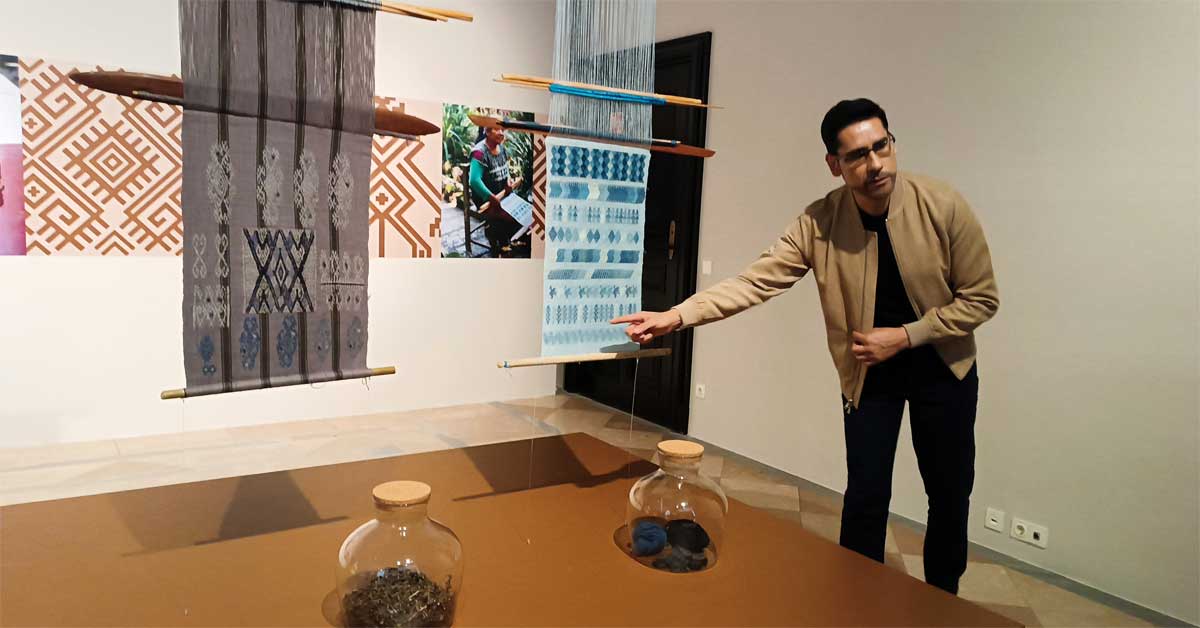

21 October 2025  The Colours of the Earth: A Journey Through Mexican Textile Art at the Weltmuseum WienAt the press conference and guided tour of the new exhibition, The Colours of the Earth. Modern Textile Art in Mexico, which will be on display from October 22, 2025, to April 6, 2026, the Weltmuseum Wien opened its doors to a vibrant world of weaving, dyeing, and cultural storytelling. Museum director Claudia Banz welcomed the media and reminded guests that the institution's role goes far beyond collecting and displaying objects. She emphasized that the museum's mission was to gather knowledge and that, through projects like this one, they aimed to become active participants rather than passive presenters.The exhibition, curated by artist, researcher, and educator Carlos Barrera Reyes, celebrates the living tradition of Indigenous textile art in Mexico. It showcases the creative collaboration between Reyes and weaving and dyeing communities in Oaxaca and Chiapas — a partnership that began in 2008 and has since evolved into a dialogue of colour, craft, and cultural exchange. Room One: The Art of Dyeing and WeavingThe first gallery greets visitors with the earthy scent of natural fibers and the vivid tones of plant-based dyes. Looms, spools of coloured thread, and portraits of the artisans illustrate the intricate process behind each fabric. Infographics explain the origins of the dyes — indigo, cochineal, marigold, and others — all drawn from the natural environment surrounding the weaving communities. Fashion.at particularly enjoyed this room's hands-on approach to traditional craftsmanship. Here, Reyes stood in front of his favourite fabric — a light blue, almost translucent indigo textile — and shared stories about its symbols. Among them, a snake motif representing water. "I learned so much from the people in the communities," he said. "They taught me to read these signs, to understand their iconography. And in return, I brought back knowledge of ancient dyeing methods and materials."Room Two: The Huipil – Tradition and IdentityThe second room focuses on the Huipil, a ceremonial garment worn by women during significant events such as baptisms, weddings, and religious festivals. Far from being mere clothing, these pieces embody identity, belonging, and spirituality. Each Huipil tells a story through its patterns — some created annually for the dressing of a Virgin Mary statue, others woven for carnival celebrations where even men may wear them. The colours and motifs are rich with meaning, forming a language of their own that ties generations together.Room Three: Modern Huipiles and the Digital BridgeThe final room brings the visitor into the present. Here, traditional artistry meets contemporary fashion and digital communication. Modern Huipiles are displayed like haute couture — their market value reaching around €1,000 — yet they remain deeply rooted in cultural heritage. Reyes explained how many weavers now use WhatsApp to communicate and Instagram to sell their works worldwide. Far from isolated villages, these artisans are skilled digital entrepreneurs. Their mastery of new media has expanded not only their reach but also their independence. After the exhibition, some of these modern pieces will be available for purchase at the museum in April, and the shop already offers textile-inspired bags and cushions — a tangible link between tradition and today's design culture.Workshops and Living KnowledgeIn addition to the exhibition, the Weltmuseum offers a series of workshops where visitors can experience natural dyeing and weaving techniques firsthand. Indigo dyeing, cochineal colouring, and band weaving sessions bring the tactile spirit of the exhibition to life. These programs underline the museum's evolving mission: to serve as a living archive of knowledge that connects people, craft, and the environment.From Oaxaca to Vienna — and to the Museum ShopThe Colours of the Earth spans the distance between the weaving communities of southern Mexico and the exhibition halls of the Weltmuseum Wien. It is an invitation to see colour as more than decoration — as a bearer of identity, history, and ecological awareness. And for those inspired to take a piece of this connection home, the journey continues beyond the galleries — right into the museum shop, where the colours of the earth continue to shine.Image: Carlos Barrera Reyes stands in front of an indigo textile dyed with indigo from Niltepec, Oaxaca. It is his favorite piece in the exhibition. He explains the symbolic motifs woven by the Tzotzil, indigenous Maya people from the central highlands of Chiapas. Photo: © Fashion.at |